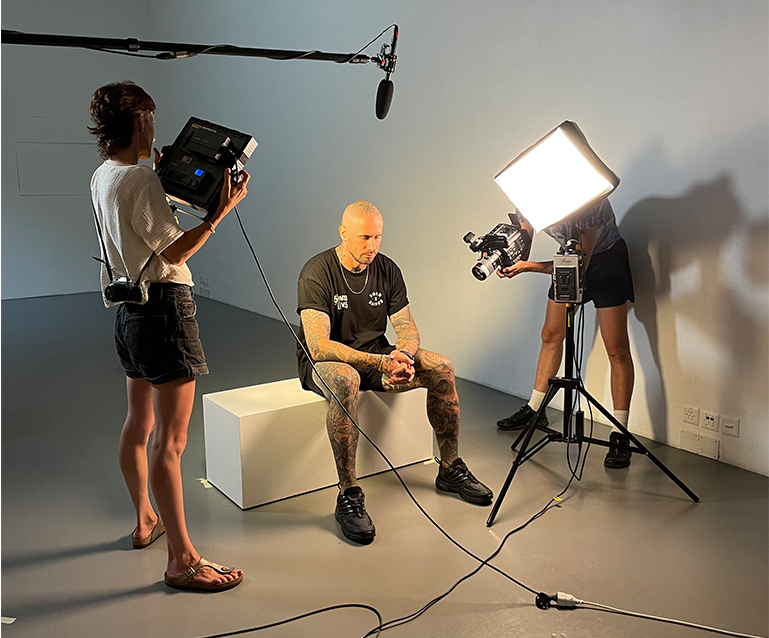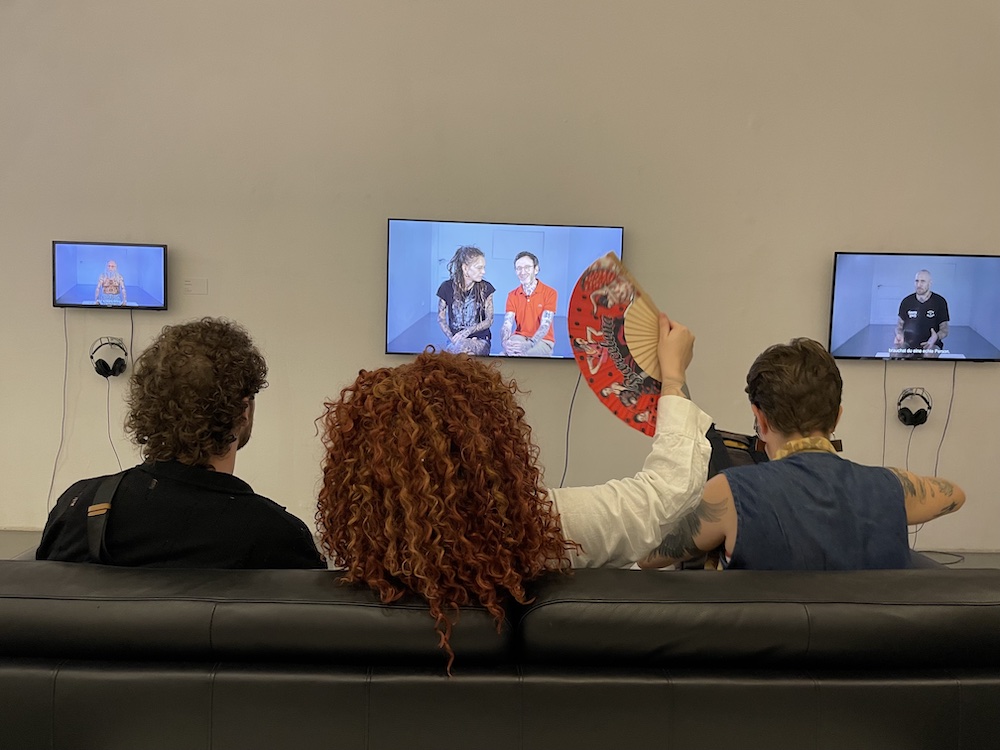Giving tattoos a voice
How can we create a space for discussion about a form of artistic expression that sweats, breathes and ages, that can hardly be confined to a museum and in which it is often not even clear who the actual creator, artist or curator is? The INK* exhibition presented us with a number of challenges in advance – and at the same time gave us the opportunity to question our understanding of art and to rethink the museum’s exhibition practice. No, tattooed skin cannot be peeled from the body and pressed into picture frames. What the skin, or rather the person it covers, can do, however, is tell a story. That is why we have given eight tattoo artists and tattooed people, as well as a curator, the floor to describe their own view of the profession (or the craft, or the art?) to us on camera. The films and conversations, which can be seen on the screens in the exhibition hall and in the pavilion, form the centerpiece of the exhibition, so to speak. In a hot week in August, we transformed the museum into a film studio, set up lights, reflectors and cameras, and let the people who (for the most part) not only know how a tattoo needle feels on the skin but also leave their drawings and signs on others have their say in long conversations: Zurich’s longest-serving tattoo artist Susan Tütsch met up again for the first time in years with author Thomas Meyer, who she had given two tattoos to years before; Mike the Freak, who is covered in tattoos, told us about the meaning of his skin drawings, which have their origins in Goa, India. The duo Golda Kracks and Max Wernli particularly appreciate the close contact and exchange with their customers – something that the artist Adrian Schär, aka Glace 3000, can only agree with, for whom tattooing is only one part of a larger process. Maxime Plescia-Büchi came from Lausanne especially for the interview; he sees parallels between tattoos and graffiti, as both need the context of skin or wall to be able to exist at all. We were able to accompany Fritz Hortig with the camera when he was in the process of painting a huge temporary wall tattoo on the white wall of the pavilion. We also wanted to know from Daniel Baumann – curator of the Kunsthalle and the only one in the group whose skin has not yet been tattooed – whether and to what extent tattoos can be viewed through art glasses at all. In the end, eleven and a half hours of footage was collected – far too much to be shown uncut in the museum. So after the talks, curator Manuela Hitz and filmmaker Remo Krieg sat down in the editing room, sifted through the recordings, shortened and edited them into short clips in which visitors can catch a glimpse of the heads – and perhaps also the hearts – of the protagonists.
Perhaps the video installation will help people to see the tattooing trade, and indeed the art of tattooing, from a new perspective.






